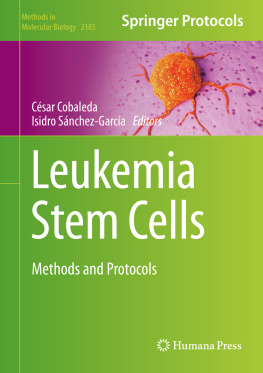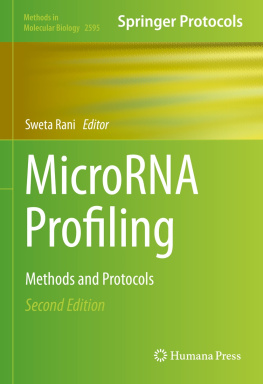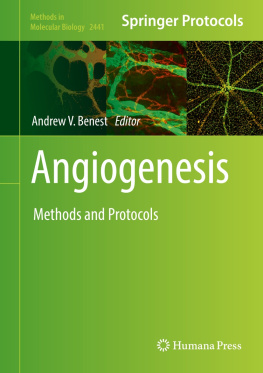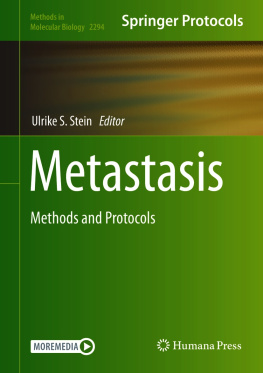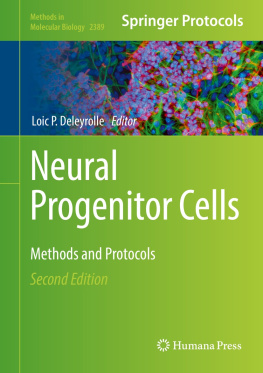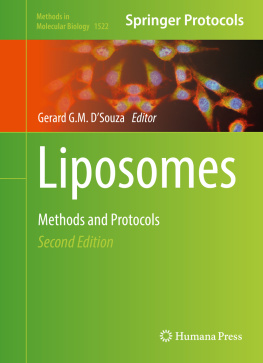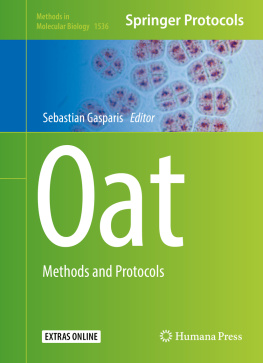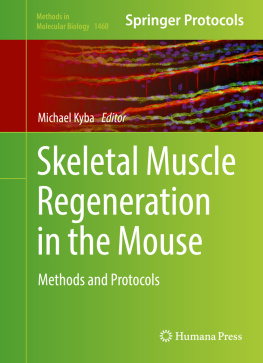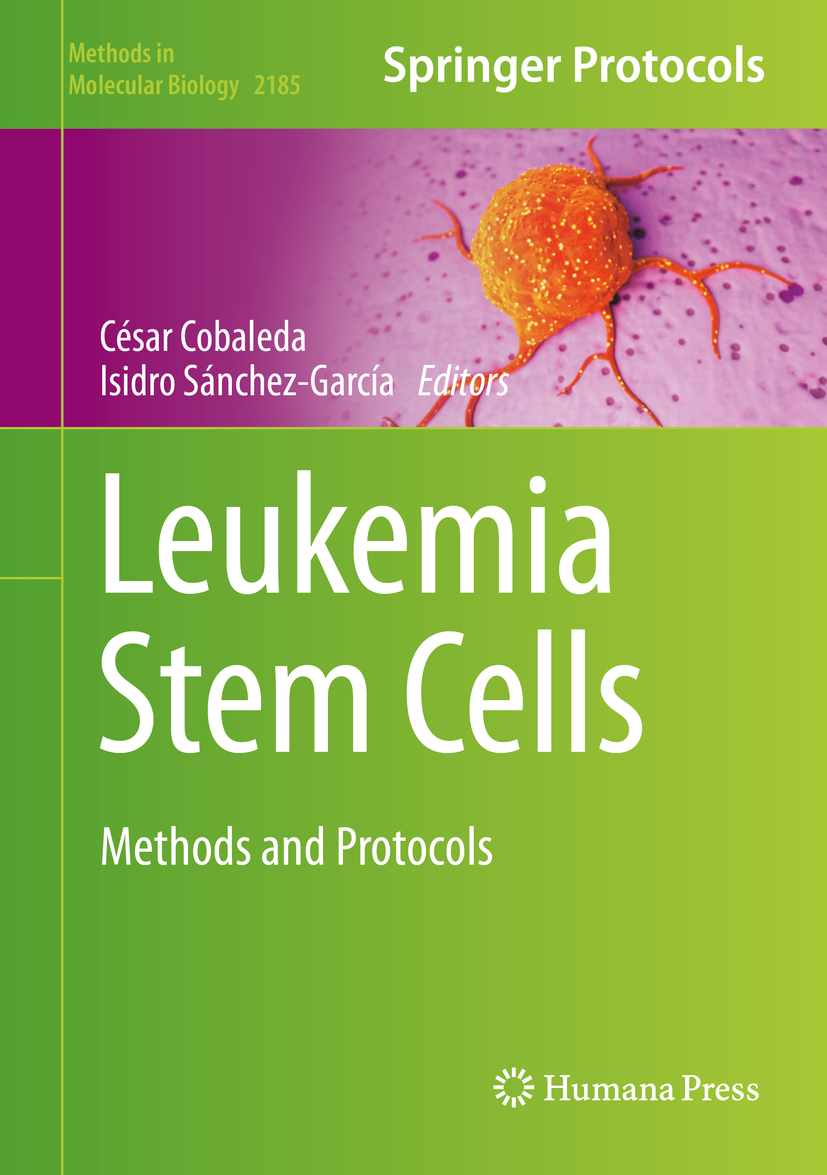Volume 2185
Methods in Molecular Biology
Series Editor
John M. Walker
School of Life and Medical Sciences, University of Hertfordshire, Hatfield, Hertfordshire, UK
For further volumes: http://www.springer.com/series/7651 For over 35 years, biological scientists have come to rely on the research protocols and methodologies in the critically acclaimed Methods in Molecular Biology series. The series was the first to introduce the step-by-step protocols approach that has become the standard in all biomedical protocol publishing. Each protocol is provided in readily-reproducible step-by step fashion, opening with an introductory overview, a list of the materials and reagents needed to complete the experiment, and followed by a detailed procedure that is supported with a helpful notes section offering tips and tricks of the trade as well as troubleshooting advice. These hallmark features were introduced by series editor Dr. John Walker and constitute the key ingredient in each and every volume of the Methods in Molecular Biology series. Tested and trusted, comprehensive and reliable, all protocols from the series are indexed in PubMed.
For over 35 years, biological scientists have come to rely on the research protocols and methodologies in the critically acclaimed Methods in Molecular Biology series. The series was the first to introduce the step-by-step protocols approach that has become the standard in all biomedical protocol publishing. Each protocol is provided in readily-reproducible step-by-step fashion, opening with an introductory overview, a list of the materials and reagents needed to complete the experiment, and followed by a detailed procedure that is supported with a helpful notes section offering tips and tricks of the trade as well as troubleshooting advice. These hallmark features were introduced by series editor Dr. John Walker and constitute the key ingredient in each and every volume of the Methods in Molecular Biology series. Tested and trusted, comprehensive and reliable, all protocols from the series are indexed in PubMed.
Editors
Csar Cobaleda and Isidro Snchez-Garca
Leukemia Stem Cells
Methods and Protocols
1st ed. 2021
Editors
Csar Cobaleda
Immune System Development and Function Unit, Centro de Biologia Molecular Severo Ochoa (CSIC/UAM), Madrid, Spain
Isidro Snchez-Garca
IBMCC, Laboratory 13, CSIC/Universidad de Salamanca, Salamanca, Spain
ISSN 1064-3745 e-ISSN 1940-6029
Methods in Molecular Biology
ISBN 978-1-0716-0809-8 e-ISBN 978-1-0716-0810-4
https://doi.org/10.1007/978-1-0716-0810-4
Springer Science+Business Media, LLC, part of Springer Nature 2021
This work is subject to copyright. All rights are reserved by the Publisher, whether the whole or part of the material is concerned, specifically the rights of translation, reprinting, reuse of illustrations, recitation, broadcasting, reproduction on microfilms or in any other physical way, and transmission or information storage and retrieval, electronic adaptation, computer software, or by similar or dissimilar methodology now known or hereafter developed.
The use of general descriptive names, registered names, trademarks, service marks, etc. in this publication does not imply, even in the absence of a specific statement, that such names are exempt from the relevant protective laws and regulations and therefore free for general use.
The publisher, the authors and the editors are safe to assume that the advice and information in this book are believed to be true and accurate at the date of publication. Neither the publisher nor the authors or the editors give a warranty, expressed or implied, with respect to the material contained herein or for any errors or omissions that may have been made. The publisher remains neutral with regard to jurisdictional claims in published maps and institutional affiliations.
This Humana imprint is published by the registered company Springer Science+Business Media, LLC, part of Springer Nature.
The registered company address is: 1 New York Plaza, New York, NY 10004, U.S.A.
Preface
Any new theoretical advance or groundbreaking discovery in science is always faced with initial rejection and opposition, and the cancer stem cell (CSC) theory has not been different. Indeed, even today, more than two decades since the first unambiguous demonstration of their presence in tumors with the advent of flow cytometry and animal transplantations, all the consequences of their existence are far from being taken up to the practice in either the clinic or even in basic or translational cancer research. This inertia of the previous models of cancer, and the reluctance to accept and integrate the CSC theory, could have been understandable in the early years, since (1) the CSC model exposed the reason behind the frustratingly frequent failure of current cancer therapies and (2) cancer studies based on analyzing the tumor mass as a whole lost a large part of their importance.
This reluctance today is indefensible. The existence of CSCs supposes a true change of paradigm in our understanding of cancer, but it will only have a real impact when we properly assimilate its implications and apply this knowledge to both cancer research and cancer treatment. To this aim, the CSC hypothesis should be incorporated from a bottom-up perspective in the design of both basic cancer investigations and therapy development projects. This means that acknowledging the CSC-based nature of tumors should be the starting point for the design of new research and therapeutical approaches. These should replace the top-bottom procedures used still too often today, in which the old paradigms are still assumed, ignoring the fact that they are not useful anymore under the postulates of the CSC theory.
The work that pioneered the demonstration of the CSC hypothesis was performed in the hematopoietic system, and leukemia stem cells (LSCs) were in fact the first CSCs identified. Actually, still today, both normal hematopoietic stem cells (HSCs) and LSCs are the best understood normal/malignant stem cell pair in the human and mouse organisms, and their study keeps leading the way in this field of research, with results that can very often be extrapolated to other tissues and their respective tumors.
The advances in LSC research are being helped by the amazing array of new technological developments that are allowing us to study leukemias with a depth that we could not have imagined just a decade ago. The present volume, part of the Methods in Molecular Biology series, aims to provide a comprehensive hands-on manual covering all the techniques involved in the cellular and molecular identification and characterization of both normal hematopoietic and leukemic stem cells, both from human patients and from mouse models of human leukemia. Also, the book covers the most frequently used experimental approaches for the generation of such stem cell-based models of human leukemia.
In order to help the less expert reader to become familiar with the concepts discussed in the protocol chapters, we have also included a review section at the beginning of the book, to provide the reader with quick-reference introductory chapters about the classification and basic biology of human leukemias, the cancer stem cell concept, and about how this concept has important implications for the way we understand, treat, and model leukemia.

